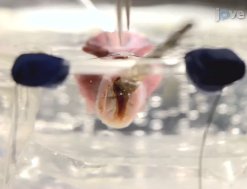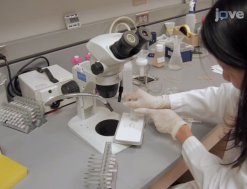Sleeping Flies and Feeding Slugs
Welcome to your weekly update on some of the latest cutting edge articles from JoVE! Last week we told you about home-made 3D Printers and mice grown from stem cells. This week, two of our most innovative articles come from the University of Pennsylvania Perelman School of Medicine and Case Western Reserve University.
Do sleeping flies have better immune response?
As anyone who has ever been sick knows, a lot of sleep is an important part of the healing process. It is no surprise that sleep helps our mammalian cousins heal, but who would have thought that sleep is also an integral part of the fly immune system? In order to better understand how sleep helps flies heal, scientists from the University of Pennsylvania Perelman School of Medicine have developed a technique to quantitatively measure the immune response of genetically modified Drosophila melanogaster. Using this assay, scientists can use phenotypically distinct flies to understand which aspect of sleep is most valuable to the immune system.
The full title of the article is “Quantitative Measurement of the Immune Response and Sleep in Drosophila” and can be found here.
Time to feed the Sea Slugs
 Aplysia californica, or the California Sea Slug, have been a valuable animal in the laboratory since Eric Kandel won the 2000 Nobel Prize in Physiology or Medicine for his research using Aplysia neurons to understand the physiological basis of memory. Because of their characteristically large neurons, which are up to 1 mm in width, Aplysia are valuable for neuroscientists interested in a wide range of mechanisms. In this study, scientists at Case Western Reserve University remove the slug’s feeding organ, the buccal mass, from the animal to study how neural input allows this organ to have multiple functions for the animal: biting, swallowing and rejection of food. This allows scientists to record neural activity in these organs clearly while the organs form naturally occurring movements.
Aplysia californica, or the California Sea Slug, have been a valuable animal in the laboratory since Eric Kandel won the 2000 Nobel Prize in Physiology or Medicine for his research using Aplysia neurons to understand the physiological basis of memory. Because of their characteristically large neurons, which are up to 1 mm in width, Aplysia are valuable for neuroscientists interested in a wide range of mechanisms. In this study, scientists at Case Western Reserve University remove the slug’s feeding organ, the buccal mass, from the animal to study how neural input allows this organ to have multiple functions for the animal: biting, swallowing and rejection of food. This allows scientists to record neural activity in these organs clearly while the organs form naturally occurring movements.
The article, titled “An In Vitro Preparation for Eliciting and Recording Feeding Motor Programs with Physiological Movements in Aplysia californica” can be found here.
Want to learn more about JoVE? See what our authors have to say about us!


